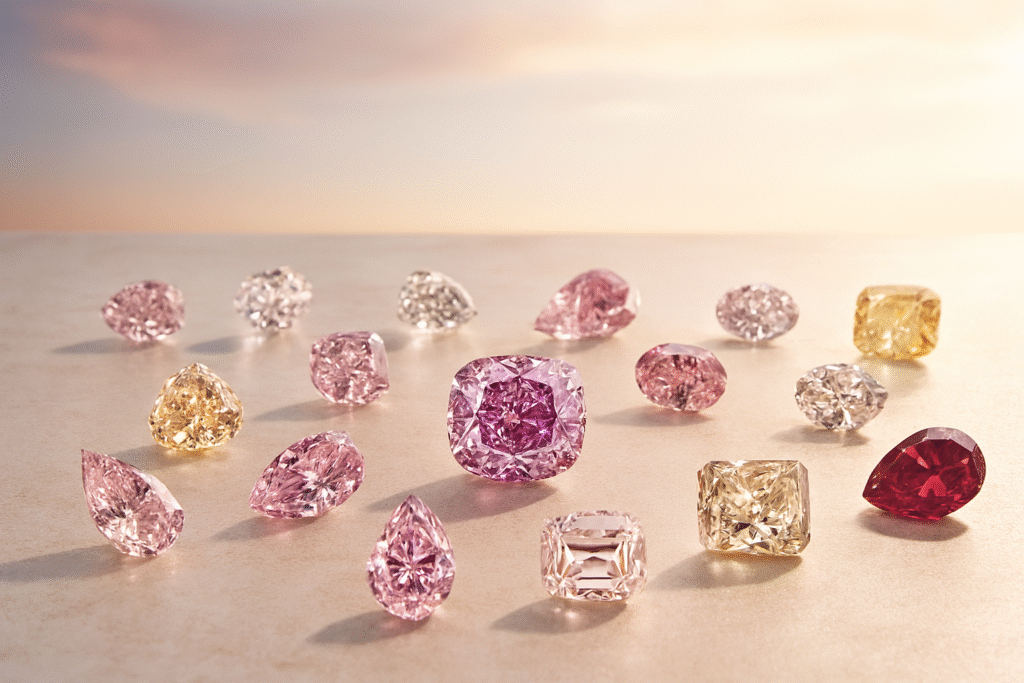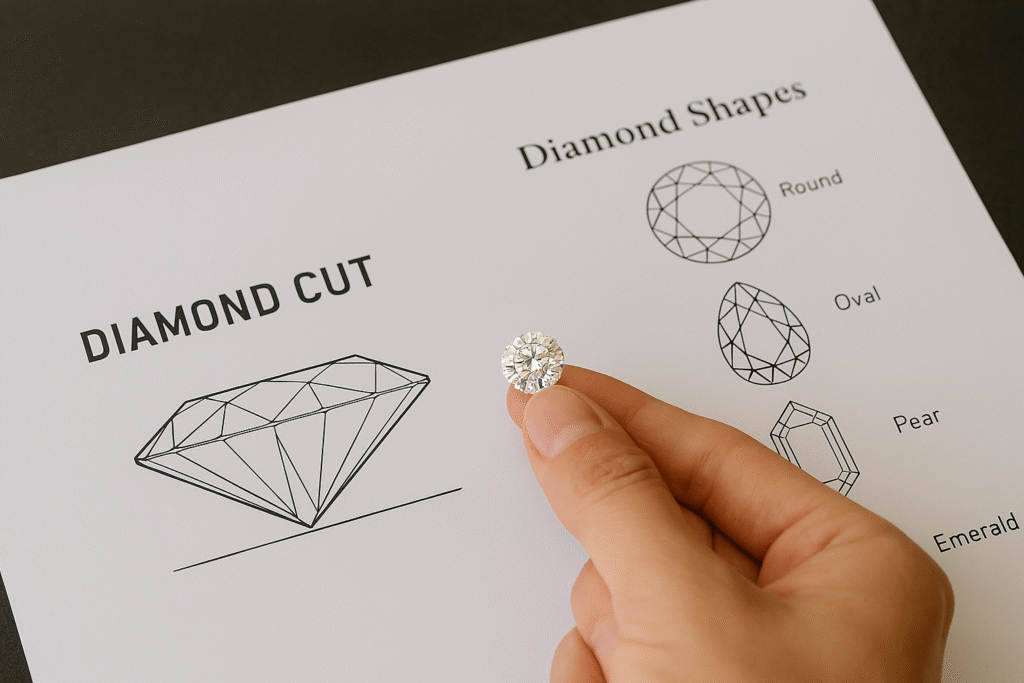The Final Beyond Rare Tender by Rio Tinto marks a historic moment in diamond history. Titled Into the Light, this last Art Series includes 52 lots of rare diamonds from the Argyle Mine in Australia and the Diavik Mine in Canada.
Why the Final Beyond Rare Tender Matters
The Argyle mine closed in 2020, ending production of its famous pinks and reds. The Diavik mine will end in 2026, making this Final Beyond Rare Tender one of the last opportunities to acquire such stones. Collectors, investors, and jewelers see these diamonds as both cultural treasures and financial assets.
- Six curated Masterpieces represent the best of Argyle and Diavik.
- 39 single diamonds and 7 sets complete the tender.
Patrick Coppens of Rio Tinto said:
“It is hard to overstate the importance of this final collection from two extraordinarily beautiful places on earth.”
For background, read about the history of Argyle mining or explore practical diamond buying tips for collectors
Highlights of the Collection
- Argyle diamonds: 1 Fancy Red, 12 Fancy Violet, 76 Fancy Pink/Purple-Pink.
- Diavik diamonds: 2 Flawless D-Colour whites (5.11 ct Emerald, 3.02 ct Pear), plus a 6.12 ct Fancy Vivid Yellow.
Learn more about the science behind the guide to understanding diamond color. For market insights, see market insights on colored diamonds.
FAQ on the Final Beyond Rare Tender
Q: Why are Argyle pink diamonds so valuable?
A: Less than 0.1% of Argyle production were pinks, and demand has surged by over 500% in 20 years.
Q: When do bids close?
A: October 20, 2025, after exhibitions in Hong Kong, Australia, and Antwerp.
Q: What makes Diavik diamonds unique?
A: They are prized for clarity, with flawless whites like the 5.11 ct Emerald cut included in this tender.
The Future of Collectible Diamonds
With Argyle closed and Diavik nearing its end, the Final Beyond Rare Tender is not just a sale—it is a milestone in diamond history. Many collectors believe these diamonds will become symbols of rarity, investment, and legacy for generations.
Introduction
This comprehensive Watch Buying Guide answers the most common questions about timepieces.
Whether you’re purchasing your first watch or adding to your collection, these expert insights help you make informed decisions.
From understanding movement types to choosing the right size for your wrist, you’ll find everything needed before making a purchase.
What Types of Watches Should You Consider? – Watch Buying Guide Insights
Understanding the five main categories helps narrow your options:
- Mechanical watches – Use springs and gears. No battery needed.
- Quartz watches – Battery-powered; most accurate.
- Automatic watches – Wind themselves from wrist movement.
- Digital watches – Display time numerically on a screen.
- Smartwatches – Connect to your phone and track fitness data.
Accuracy Expectations – Watch Buying Guide Tips
- Quartz watches – Lose about 15 seconds per month.
- Mechanical watches – Lose 20–40 seconds per day.
- Atomic watches – Lose 1 second every 100 million years.
- Your phone’s clock stays perfectly accurate.
Water Resistance Considerations
Water resistance ratings affect usage scenarios:
- 30m – Handles rain and handwashing
- 50m – Safe for swimming
- 100m – Suitable for snorkeling
- 200m+ – Scuba diving
Replace gaskets every 2–3 years to maintain resistance.
Maintenance Schedule – Watch Buying Guide Advice
- Quartz watches – Battery replacement every 1–3 years.
- Mechanical watches – Full service every 3–5 years.
- Service costs: $200–800 depending on the brand.
Watch for stopping, running fast/slow, or condensation under the crystal.
Pricing Strategy
- Budget watches – Plastic cases, basic movements
- Mid-range watches – Steel cases, reliable mechanisms
- Luxury watches – Precious metals, hand-finished details
Remember: craftsmanship, materials, and brand prestige drive prices.
Sizing Advice
- 6–7 inch wrists – 38–42mm
- 7–8 inch wrists – 40–44mm
- 8+ inch wrists – 42–46mm
Ensure lugs don’t overhang wrist edges.
Complications to Prioritize
- Date display – Useful daily
- GMT hand – Second time zone
- Chronograph – Stopwatch
- Moon phase – Decorative
- Annual calendar – Adjusts month lengths
More complications = more things that can break.
Maintenance Tips
- Clean with a soft cloth
- Avoid extreme temperatures & magnets
- Wind manual watches daily
- Use watch winders for automatics
- Don’t adjust date between 9 PM–3 AM
Investment Potential
- Most watches lose value after purchase
- Only select Rolex, Patek Philippe, Audemars Piguet models appreciate
- Vintage watches from 1960s–70s show strong growth
- Buy watches you enjoy wearing, not solely for investment
Essential Tools
- Spring bar tool
- Case back opener
- Soft polishing cloth
- Watch cushion
- Demagnetizer
Where to Purchase
- Online – Better selection, often cheaper
- Physical stores – Try before buying
- Authorized dealers – Full warranties
- Grey market – Discounts, limited warranty
- Forums/eBay – Vintage pieces, verify authenticity
Learn More:



